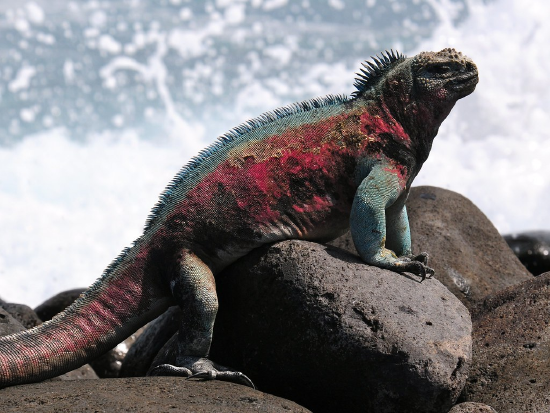5: Adaptations to the Environment
- Page ID
- 103330
\( \newcommand{\vecs}[1]{\overset { \scriptstyle \rightharpoonup} {\mathbf{#1}} } \)
\( \newcommand{\vecd}[1]{\overset{-\!-\!\rightharpoonup}{\vphantom{a}\smash {#1}}} \)
\( \newcommand{\dsum}{\displaystyle\sum\limits} \)
\( \newcommand{\dint}{\displaystyle\int\limits} \)
\( \newcommand{\dlim}{\displaystyle\lim\limits} \)
\( \newcommand{\id}{\mathrm{id}}\) \( \newcommand{\Span}{\mathrm{span}}\)
( \newcommand{\kernel}{\mathrm{null}\,}\) \( \newcommand{\range}{\mathrm{range}\,}\)
\( \newcommand{\RealPart}{\mathrm{Re}}\) \( \newcommand{\ImaginaryPart}{\mathrm{Im}}\)
\( \newcommand{\Argument}{\mathrm{Arg}}\) \( \newcommand{\norm}[1]{\| #1 \|}\)
\( \newcommand{\inner}[2]{\langle #1, #2 \rangle}\)
\( \newcommand{\Span}{\mathrm{span}}\)
\( \newcommand{\id}{\mathrm{id}}\)
\( \newcommand{\Span}{\mathrm{span}}\)
\( \newcommand{\kernel}{\mathrm{null}\,}\)
\( \newcommand{\range}{\mathrm{range}\,}\)
\( \newcommand{\RealPart}{\mathrm{Re}}\)
\( \newcommand{\ImaginaryPart}{\mathrm{Im}}\)
\( \newcommand{\Argument}{\mathrm{Arg}}\)
\( \newcommand{\norm}[1]{\| #1 \|}\)
\( \newcommand{\inner}[2]{\langle #1, #2 \rangle}\)
\( \newcommand{\Span}{\mathrm{span}}\) \( \newcommand{\AA}{\unicode[.8,0]{x212B}}\)
\( \newcommand{\vectorA}[1]{\vec{#1}} % arrow\)
\( \newcommand{\vectorAt}[1]{\vec{\text{#1}}} % arrow\)
\( \newcommand{\vectorB}[1]{\overset { \scriptstyle \rightharpoonup} {\mathbf{#1}} } \)
\( \newcommand{\vectorC}[1]{\textbf{#1}} \)
\( \newcommand{\vectorD}[1]{\overrightarrow{#1}} \)
\( \newcommand{\vectorDt}[1]{\overrightarrow{\text{#1}}} \)
\( \newcommand{\vectE}[1]{\overset{-\!-\!\rightharpoonup}{\vphantom{a}\smash{\mathbf {#1}}}} \)
\( \newcommand{\vecs}[1]{\overset { \scriptstyle \rightharpoonup} {\mathbf{#1}} } \)
\( \newcommand{\vecd}[1]{\overset{-\!-\!\rightharpoonup}{\vphantom{a}\smash {#1}}} \)
\(\newcommand{\avec}{\mathbf a}\) \(\newcommand{\bvec}{\mathbf b}\) \(\newcommand{\cvec}{\mathbf c}\) \(\newcommand{\dvec}{\mathbf d}\) \(\newcommand{\dtil}{\widetilde{\mathbf d}}\) \(\newcommand{\evec}{\mathbf e}\) \(\newcommand{\fvec}{\mathbf f}\) \(\newcommand{\nvec}{\mathbf n}\) \(\newcommand{\pvec}{\mathbf p}\) \(\newcommand{\qvec}{\mathbf q}\) \(\newcommand{\svec}{\mathbf s}\) \(\newcommand{\tvec}{\mathbf t}\) \(\newcommand{\uvec}{\mathbf u}\) \(\newcommand{\vvec}{\mathbf v}\) \(\newcommand{\wvec}{\mathbf w}\) \(\newcommand{\xvec}{\mathbf x}\) \(\newcommand{\yvec}{\mathbf y}\) \(\newcommand{\zvec}{\mathbf z}\) \(\newcommand{\rvec}{\mathbf r}\) \(\newcommand{\mvec}{\mathbf m}\) \(\newcommand{\zerovec}{\mathbf 0}\) \(\newcommand{\onevec}{\mathbf 1}\) \(\newcommand{\real}{\mathbb R}\) \(\newcommand{\twovec}[2]{\left[\begin{array}{r}#1 \\ #2 \end{array}\right]}\) \(\newcommand{\ctwovec}[2]{\left[\begin{array}{c}#1 \\ #2 \end{array}\right]}\) \(\newcommand{\threevec}[3]{\left[\begin{array}{r}#1 \\ #2 \\ #3 \end{array}\right]}\) \(\newcommand{\cthreevec}[3]{\left[\begin{array}{c}#1 \\ #2 \\ #3 \end{array}\right]}\) \(\newcommand{\fourvec}[4]{\left[\begin{array}{r}#1 \\ #2 \\ #3 \\ #4 \end{array}\right]}\) \(\newcommand{\cfourvec}[4]{\left[\begin{array}{c}#1 \\ #2 \\ #3 \\ #4 \end{array}\right]}\) \(\newcommand{\fivevec}[5]{\left[\begin{array}{r}#1 \\ #2 \\ #3 \\ #4 \\ #5 \\ \end{array}\right]}\) \(\newcommand{\cfivevec}[5]{\left[\begin{array}{c}#1 \\ #2 \\ #3 \\ #4 \\ #5 \\ \end{array}\right]}\) \(\newcommand{\mattwo}[4]{\left[\begin{array}{rr}#1 \amp #2 \\ #3 \amp #4 \\ \end{array}\right]}\) \(\newcommand{\laspan}[1]{\text{Span}\{#1\}}\) \(\newcommand{\bcal}{\cal B}\) \(\newcommand{\ccal}{\cal C}\) \(\newcommand{\scal}{\cal S}\) \(\newcommand{\wcal}{\cal W}\) \(\newcommand{\ecal}{\cal E}\) \(\newcommand{\coords}[2]{\left\{#1\right\}_{#2}}\) \(\newcommand{\gray}[1]{\color{gray}{#1}}\) \(\newcommand{\lgray}[1]{\color{lightgray}{#1}}\) \(\newcommand{\rank}{\operatorname{rank}}\) \(\newcommand{\row}{\text{Row}}\) \(\newcommand{\col}{\text{Col}}\) \(\renewcommand{\row}{\text{Row}}\) \(\newcommand{\nul}{\text{Nul}}\) \(\newcommand{\var}{\text{Var}}\) \(\newcommand{\corr}{\text{corr}}\) \(\newcommand{\len}[1]{\left|#1\right|}\) \(\newcommand{\bbar}{\overline{\bvec}}\) \(\newcommand{\bhat}{\widehat{\bvec}}\) \(\newcommand{\bperp}{\bvec^\perp}\) \(\newcommand{\xhat}{\widehat{\xvec}}\) \(\newcommand{\vhat}{\widehat{\vvec}}\) \(\newcommand{\uhat}{\widehat{\uvec}}\) \(\newcommand{\what}{\widehat{\wvec}}\) \(\newcommand{\Sighat}{\widehat{\Sigma}}\) \(\newcommand{\lt}{<}\) \(\newcommand{\gt}{>}\) \(\newcommand{\amp}{&}\) \(\definecolor{fillinmathshade}{gray}{0.9}\)
Chapter Summary
For each species, there is a set of environmental conditions within which it can best survive and reproduce. It is under these conditions that the species is best adapted. The abiotic variables most influential in determining a species adaptations are temperature, and water, and the acquisition of nutrients and energy. Temperature affects the physiology of living things and limits their distributions. There are few organisms on Earth that can survive below 0 °C (32 °F) or above 45 °C (113 °F) due to metabolic constraints. While some organisms adapt to extremes in temperatures, others are able to tolerate fluctuations in temperature, and finally, others have evolved physiological mechanisms for maintaining a stable internal temperature despite fluctuations in their surroundings. Water is required by all living things on earth and organisms must balance water acquisition with water loss to maintain a stable internal environment. Additionally, many strategies exist of acquiring energy and nutrients. The principle of allocation describes the tradefoff that exists when organisms adapt to certain sets of environmental conditions, they often loose fitness in other environmental conditions.
Learning Objectives
After reading this chapter you should be able to:
- Describe how the distribution of organisms is determined by their tolerance to environmental variables.
- Explain the concept of homeostasis.
- Describe thermoregulation of endothermic and ectothermic animals.
- Define osmoregulation and describe this process in animals and plants.
- Describe metabolic pathways that release or store energy.
- List elements required by living organisms.
- Provide examples of evolutionary trade-offs with regards to the acquisition of nutrients and energy.
- 5.1: Tolerance Ranges of Species
- Many different physical, abiotic (non- living) factors influence where species live, including temperature, humidity, soil chemistry, pH, salinity and oxygen levels. For each species, there is a set of environmental conditions within which it can best survive and reproduce. It is under these conditions that the species is best adapted. Ecologists are interested in studying and understanding tolerance ranges of different species for different environments, and how these adaptations influence the
- 5.2: Temperature, Water, and other Factors
- Temperature can limit the distribution of living things. Most organisms are adapted to a fairly narrow rage of temperatures. Animals faced with temperature fluctuations may respond with adaptations, such as migration, in order to survive. Water is required by all living things because it is critical for cellular processes. Most organisms have adaptations to reduce water loss to the environment. Other elements such at phosphorus, nitrogen, or dissolved oxygen can also affect the distribution of l
- 5.3: Homeostasis and Regulation
- Animal organs and organ systems constantly adjust to internal and external changes in order to maintain this steady state. Two examples of factors that are regulated homeostatically are temperature (thermoregulation) and water content (osmoregulation). Animals can be divided into two groups: those that maintain a constant body temperature in the face of differing environmental temperatures (endotherms), and those that have a body temperature that is the same as their environment and thus varies
- 5.4: Energy and Nutrients
- All organisms require energy and nutrients. Nutrients are the raw materials an organism must acquire from the environment to live. Carbon, nitrogen, phosphorus, hydrogen, oxygen, and sulfer are the most common elements used by living organisms. Energy is used to power life’s processes and is ultimately derived from solar radiation. Organisms that use inorganic sources of both carbon and energy are called autotrophs. Because autotrophs produce their own food, they are sometimes called producers.
- 5.5: Principle of Allocation and Evolutionary Trade-offs
- When a population adapts to one set of environmental conditions its fitness (ability to survive and reproduce) decreases in other environments. The principle of allocation leads to trade-offs, which are the relationships between the benefits of resource investment decisions in one context compared to the costs of those decisions in another context. Optimal foraging theory quantifies the benefits (in terms of energy content) of various prey choices and the costs (in terms of energy inputs for cap

